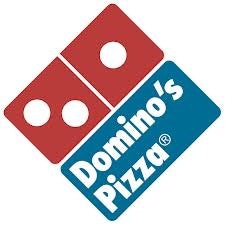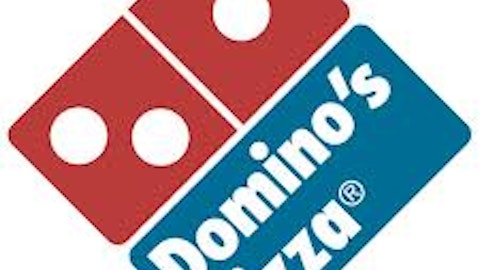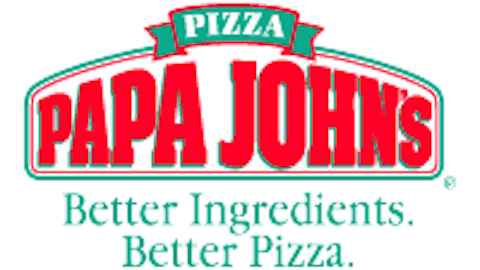Weak economic growth in the U.S. has dampened sales prospects for many restaurant chains, which now must fight intensely for each customer they get. Although the industry continues to recover in terms of sales growth, the cloudy jobs picture remains troublesome for restaurant chains’ management. The labor force participation rate remains at historically low levels. Those without jobs or who have given up looking for work are forced to cut back on discretionary spending such as dining out.
A strategic theme restaurant chains have adopted is Affordability. They are seeking to draw customers back by providing more reasonably priced dining choices and adding new menu items.
Today we look at three well-known restaurant brands that have coped with the choppy economy with varying degrees of success. The question is whether they have the right strategies in place to achieve sustained revenue growth, given the intense competition in the restaurant industry, as the economy (hopefully) continues to improve.
Pizza spanning the globe
Domino’s Pizza, Inc. (NYSE:DPZ) announced excellent first-quarter results compared to the same quarter last year. Their recipe for success had two key ingredients: Domino’s ran their operations more efficiently while increasing same store sales. The cost of sales dropped significantly from 70.2% to 68.9%.
Domestic same-store sales (revenue from restaurants that were in operation both years) rose 6.2%, and Domino’s Pizza, Inc. (NYSE:DPZ)’s international division did even better with a 6.5% increase. Net income for the quarter jumped to over $34 million compared to $21 million in 2012’s first quarter.
The company now has more than 10,000 stores worldwide, with 52% of these outside the U.S.They added a net of 80 new international locations during the quarter, but showed a net loss of 5 stores domestically.
Domino’s Pizza, Inc. (NYSE:DPZ)’s franchise-oriented business model allows the company to generate cash flow from royalties without having to incur the expense of operating each store. The company used some of this cash to buy back more than 300,000 of its common shares and pay a $.20 per share dividend.
A good way to learn about a restaurant’s company strategy is to visit its website, where you can see menu changes and promotions they are running. Domino’s Pizza, Inc. (NYSE:DPZ)’s strategy includes adding a selection of pan pizzas, but also offering yummy non-pizza dishes such as a Chicken Habanero sandwich or a Pasta Primavera pasta dish. Does this sound like they aim to compete with the casual-dining style restaurant segment? Absolutely.
Domino’s Pizza, Inc. (NYSE:DPZ) began rolling out these menu innovations in 2008 through 2009 with stunning results. Same-store sales for the first quarter of 2010 rose a whopping 14.3 percent over the same period in 2009.
On the Brinker of higher profits
Brinker International, Inc. (NYSE:EAT) is the operator or franchisor of 1,544 Chili’s Grill & Bar restaurants and 44 Maggiano’s Little Italy restaurants. Chili’s results for the quarter ended ended March 27 showed a 1.1% decline in comparable restaurant sales for company-owned stores. Among franchise properties, comparable sales were up 1.3%; the star performer was the international segment, up 5.1%.
Chili’s third-quarter companywide sales declined 0.7% to $633 million. The company said this was due to a decline in restaurant guest traffic. The company was able to improve operating margins by changing the ingredient mix in its menu and installing new kitchen equipment that improved productivity. They also reported savings in G&A expense due to lower performance-based compensation.
Of course, the goal is to achieve higher sales and have to pay higher bonuses to the restaurant managers. The bottom line: net income increased 10% compared to 2012 despite what Brinker International, Inc. (NYSE:EAT) CEO Wyman Roberts described as “a tough industry sales environment.”
One of Chili’s recent menu innovations: pizza. Do we detect some competitive convergence in this industry? Chili’s also recognizes the trend toward healthier dining options. On the menu page of the company’s website you can click on a menu of vegetarian choices. One option offered is a Grilled Chicken Sandwich without chicken or bacon. At my house, we call that two pieces of grilled toast.
Casual Tuesdays
For the fiscal third quarter ending March 5, Ruby Tuesday, Inc. (NYSE:RT) reported a 2.8% decline in same-restaurant sales for company-owned stores, and a decline of 1.7% at domestic franchise restaurants. The company has 709 company-owned and 77 franchise stores. Net income from continuing operations also suffered a decline to $4.7 million, compared to $6.9 million the year before.
The modest decline in sales, combined with negative year-over-year variances in selling, G&A, and interest expense, were the culprits behind the slide in profit.
The company’s strategic path included closing the Marlin & Ray’s, Truffles Grill, and Wok Hay restaurant concepts, and repurchasing 1.3 million shares of the company’s common stock. They also undertook cost savings initiatives. CEO JJ Buettgen said in the press release that they want consumers to perceive their brand as “more mainstream, lively and approachable.” He added that the company’s marketing message will be aimed at portraying Ruby Tuesday, Inc. (NYSE:RT)’s as “more fun, casual and affordable”. There’s that word again — Affordable. They deliver that message very clearly on their website, where they introduce their summer menu “A Taste of theIslands” by saying “Escape to the Islands without breaking the bank.”
Choosing From This Menu of Stocks
I would need more evidence that Ruby Tuesday, Inc. (NYSE:RT)’s repositioning strategy is working before I could be confident about the stock. This company would be my third choice.
Brinker International, Inc. (NYSE:EAT)’s Chili’s restaurants already are well entrenched in the “fun, casual and affordable” niche that Ruby Tuesday is striving for. Their initiatives to improve productivity and lower costs should continue to show up in the bottom line.
Domino’s Pizza, Inc. (NYSE:DPZ)’s diversified menu positions them to compete with the host of casual dining establishments customers have to choose from, and not just with other pizzerias. Their aggressive international expansion is also a strategy that is clearly working.
Their international segment has achieved 77 quarters in a row of same-store sales growth. Since 2008, Domino’s percentage growth in international locations has exceeded that of both Starbuck’s and McDonald’s.
I’m impressed with both Brinker’s and Domino’s chances to deliver positive results for investors.
The article Are These Restaurant Chains Satisfying Investors’ Appetites? originally appeared on Fool.com and is written by Brian Hill.
Brian Hill has no position in any stocks mentioned. The Motley Fool has no position in any of the stocks mentioned. Brian is a member of The Motley Fool Blog Network — entries represent the personal opinion of the blogger and are not formally edited.
Copyright © 1995 – 2013 The Motley Fool, LLC. All rights reserved. The Motley Fool has a disclosure policy.






